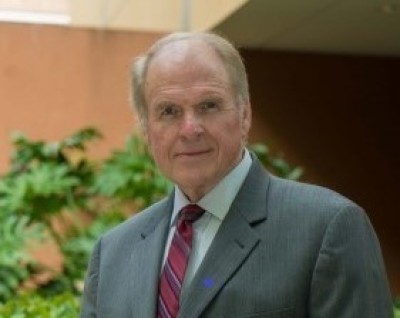Building the post-pandemic church: Developing the healthy church (pt 4)
Will the COVID-19 virus infect, sicken, and kill the body of Christ?
Will masked congregations scattered in auditoriums missing three quarters of their capacities become the “new normal”?
These are vital questions, not just for churches, but for whole societies.

The health of a nation and its culture is proportionate to the health of the church within the nation. The prophet Ezekiel sees shockingly that what is happening inside the House of God influences what is happening outside the House of God. (Ezekiel 8)
Russell Kirk, the 20th century political theorist, wrote: “Fundamentally, our society’s affliction is the decay of religious belief. If a culture is to survive and flourish, it must not be severed from the religious vision out of which it arose. The high necessity of religious men and women, then, is to labor for the restoration of religious teachings as a credible body of doctrine.”
Pastor Steve Riggle is one of those leaders “laboring hard” for church restoration midst the COVID pandemic. Riggle’s experiences as a church planter, pastor, and global leader qualify him uniquely to make such an assessment. He arrived in Houston some forty years ago after a successful church planting ministry in his native California—especially in the challenging San Francisco Bay area.
Riggle moved to south Houston and planted a church that grew to 17,000. Then he relocated to the Woodlands community north of Houston and planted again. He is still serving Grace Church Woodlands as senior pastor.
On top of that, Riggle is president of Grace International, a global community of some 3,800 churches and 400,000 members in 107 countries.
Riggle believes there will be four types of post-pandemic churches:
- Those that have bought into the contemporary socio-cultural narrative, incorporating “wokeness” (or joining “the Cult of Woke,” as Federalist writer John Daniel Davidson puts it) in their language and practice.[1]
- Churches oblivious to the changes happening all around them, especially unaware of the spiritual dynamics
- Churches that understand the times, but are intimidated, fearing man more than God
- The “remnant church” whose founding is recorded in Matthew 16 when Simon Peter acknowledges Jesus as “the Christ, the Son of the living God,” and Jesus responds that “upon this rock I will build My church; and the gates of Hades will not overpower it.”
I have described this remnant church as Jesus-Centered, Spirit-Energized, Word-anchored, and Kingdom-focused. Riggle adds more detail. The remnant church, he says, will be courageous, not intimidated, or silent. It will embrace Jesus as its absolute Head and be governed by the values of the Kingdom of Heaven.
The remnant body, Riggle thinks, will be a gathering church, highly relational. It will be a “house of prayer,” ministering the incarnational work of Jesus as revealed in the New Testament, giving special focus to the poor and disenfranchised, while strengthening other leaders. The remnant church Riggle envisions will engage in penetrative evangelism, “sowing salt” into the culture. It will not be hampered by institutionalization but have dynamic structural coherence.
Back in 1973 as I sought to understand Jesus’s earthly ministry, I saw that its structural order was based on a matrix of relationships. Structure in the church has coherence through relationships.
The first is the relationship between the congregation and Christ. This foundational strength is then imparted via relationships throughout the local and trans-local church.
This relational arrangement is illustrated by an old-fashioned wagon wheel, consisting of
- Hub
Jesus was in a special “hub” relationship with Peter, James, and John. The “hub” is the center of vision and governance in a church, represented by a New Testament eldership.
- Axle
Jesus also directed His disciples not to reject those doing His work who were not part of His band of direct disciples. Thus, the axle represents the linkage between the local church and others across its city, region, and world — even those of other denominations or fellowships — all for the purpose of carrying out Christ’s Great Commission. (Matthew 28:18-20)
- Spokes
In addition to those closest to Jesus in His “hub” relationships, He also developed and sent out many others: 70, 120, and eventually the whole of His community of followers. The “spokes” therefore symbolize the means of functional ministry within a local church, and key leaders in those ministries.
- Rim
A church’s success and health are measured by what happens at the “rim” of impact. The “rim” is where the wheel hits the road, and proves its strength and effectiveness, or lack of it. In studying the Jesus model, I noted specific actions by which the Lord impacted the “rim.” From that emerged what I call “The Reach-Keep Strategy”:
- Attract people by understanding and addressing their perceived needs.
- Attach those you reach to specific ministries and relationships that will address their perceived needs in practical ways.
- Assimilate people through bringing them into healthy relationships.
- Advance those to whom you minister as disciples of Jesus with an awareness of their spiritual gifts
- Activate them through ministry participation
- Assess their growth and effectiveness as demonstrated in their own ministry engagement
- Affirm the people individually by recognition of their dedication, service, and ministry fruit
The general season of chaos through which we are passing is an opportune time — a kairos moment — for “re-envisioning” and taking practical actions to develop the church that truly functions in the world as the body of Christ — the Jesus church. Rather than being sickened, churches can gain new health as they focus on growing in the ministry style of Jesus.
[1]https://thefederalist.com/2020/08/03/americans-are-turning-away-from-religion-toward-dangerous-secular-cults/
Wallace Henley is a former pastor, White House and congressional aide, and author of more than 25 books. His newest is Two Men From Babylon: Nebuchadnezzar, Trump, and the Lord of History, published by Thomas Nelson.






















